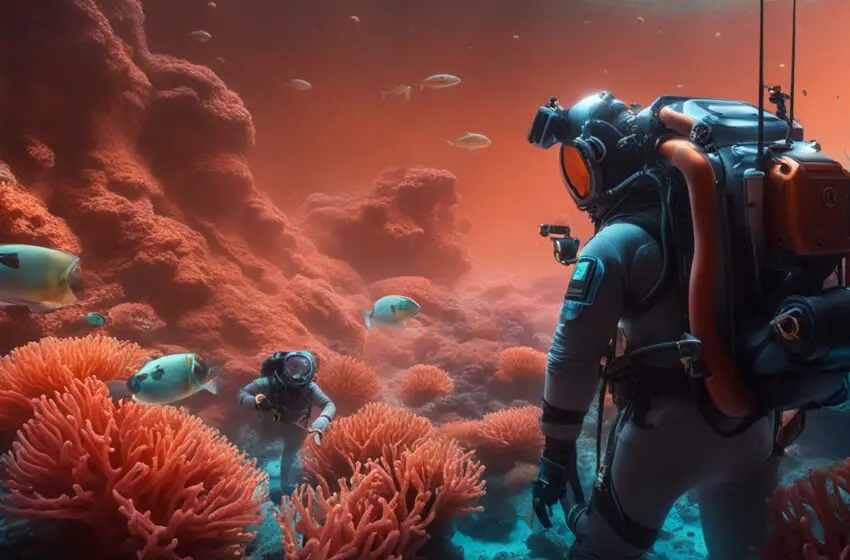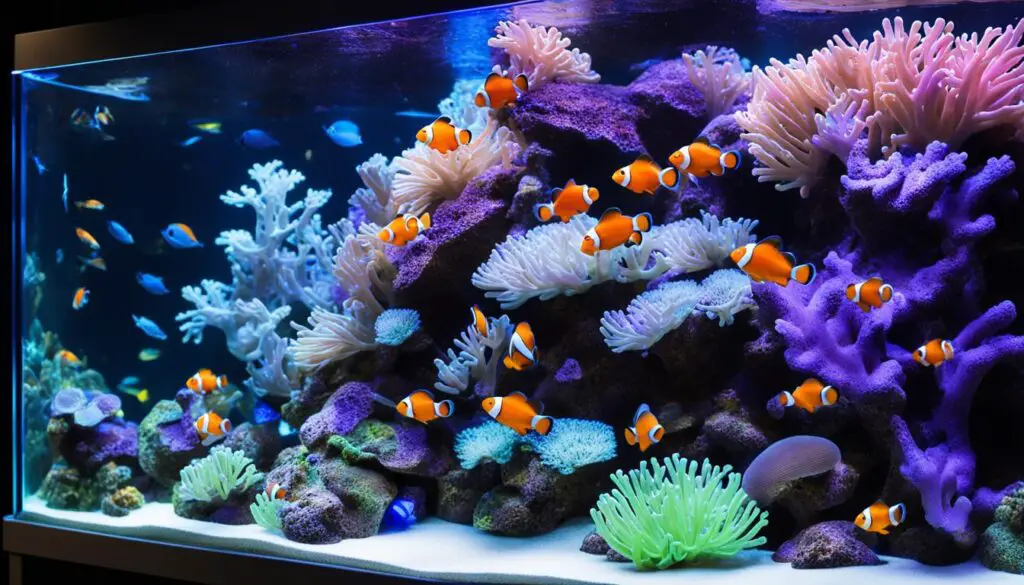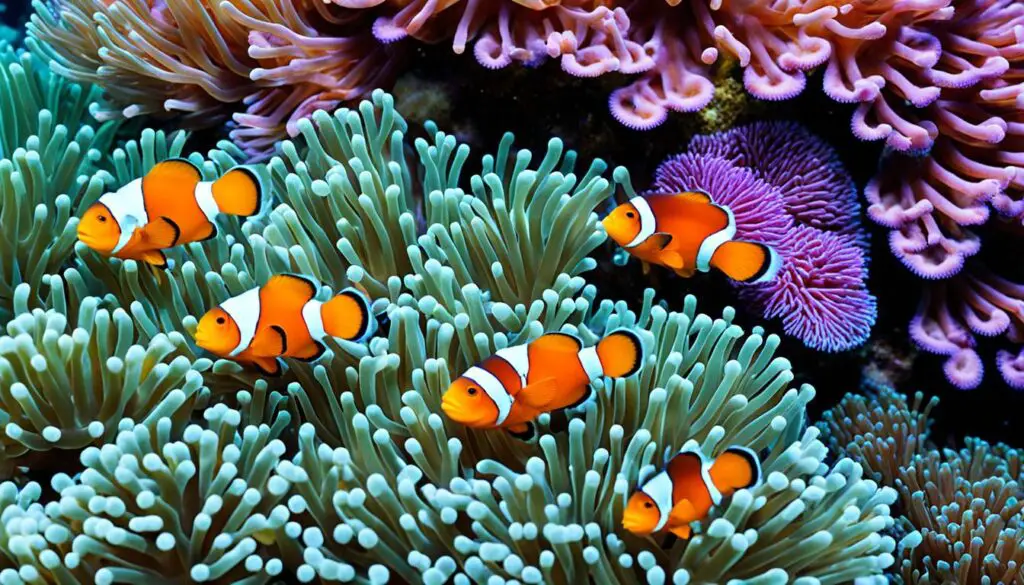Coral Reef Restoration: Unlocking the Secrets: Coral Reef Restoration Techniques Revealed!

A study in the journal Current Biology shows great progress in coral reef restoration. It was done at the Mars Coral Reef Restoration Program in Indonesia. The study found that just four years after the reefs were transplanted, they were growing as fast as natural, healthy reefs. This quick recovery helps increase the amount of coral and bring back crucial functions like providing homes for marine life and protecting against waves and erosion.
This study also focused on the Reef Stars technique. This method uses special steel structures covered in sand. They help keep the new coral in place and encourage its fast growth. This technique is a sign of hope for the future of coral reef restoration. It shows that with the right efforts, we can make coral reefs thrive again. It stresses the importance of active management to help reefs stay strong.
Key Takeaways:
- Coral reef restoration can lead to rapid recovery, with restored reefs growing at the same speed as healthy reefs in just a few years.
- Restored coral reefs provide crucial ecosystem functions, including habitat provision for marine life and protection against wave energy and erosion.
- The Reef Stars technique, involving sand-coated steel structures, has been effective in kickstarting rapid coral growth on degraded reefs.
- Active management actions are necessary to enhance the resilience of coral reefs and ensure successful restoration efforts.
- These findings offer hope for the future of coral reef restoration and the preservation of these vital marine ecosystems.
Coral Gardening: Cultivating Hope beneath the Waves
Coral gardening is a new method that aims to fix and boost coral reefs’ health. It offers hope for the future of these key ecosystems. As a marine biologist, I see its huge potential in helping us fight the decline of coral and revive weak reefs.
The coral gardening process starts by selecting strong coral pieces. These pieces are chosen for being both healthy and having diverse genes. Divers and experts pick these pieces, which are then moved to underwater nurseries, safe places for them to grow. These young corals are called “coral recruits.”

The nurseries use mesh cages or hanging ropes to keep the coral safe. These tools protect them from harm and bad weather. They are placed where the water flow and light are just right. This helps the coral stay healthy as it grows.
Enhancing Coral Health and Growth
Experts use special methods to make coral healthier and grow faster. One way is by using coral probiotics. These are good microorganisms that make the coral more resistant to disease and the changing climate. They also promote coral reproduction.
When the coral is big and strong enough, it’s time to move it to damaged reefs. Divers carefully attach them to the seabed. This step is crucial for boosting the number of corals, making the reefs more diverse, and rebuilding their structure.
Fostering Biodiversity and Boosting Coastal Economies
Coral gardening is a strong method for saving marine life and sustaining habitats. By improving reefs and growing more corals, it brings back a lot of sea animals. These new homes help marine life flourish again.
The good effects of coral gardening go past just fixing the ocean; they also help the local economy. Revived coral reefs draw in tourists. This helps local businesses make money and supports the people living by the sea. It also teaches others about the need to protect coral reefs.
“Coral gardening offers a tangible path towards reviving degraded reefs, fostering biodiversity, and boosting coastal economies.”
Coral gardening’s impact in growing coral is groundbreaking. If we use this method more, we can really help save these vital ecosystems. Scientists, conservation groups, and enthusiasts are leading the way to a future where healthy reefs and diverse sea life thrive.
| Advantages of Coral Gardening | Challenges of Coral Gardening |
|---|---|
|
|
Technology in Coral Reef Restoration: Building Reefs of the Future
Technology is key to boost coral reef restoration projects. It’s helping scientists and conservations work hard to bring back these crucial ecosystems.
3D printed shapes, like real coral, make great homes for sea life. They can be made unique and put in places that help coral grow.
Now, underwater drones with smart vision are changing how we map and watch over damaged reefs. They check the coral’s health, find risks, and plan how to fix things better.
Also, there are special labs underwater that help baby corals grow healthy and strong. This gives new hope to reefs struggling against climate change.
There’s talk about using gene tweaks to make corals tough against heat and sickness. This could lead to corals that can survive and thrive better.
Computer models are looking at the sea’s movements to pick the best fix plans. This way, we aim to get the best results in restoring reefs.
Lastly, online sites are bringing the world’s reef experts together. They share data and ideas fast, which is great for solving coral reef problems worldwide.
The hope for coral reef restoration is in these scientists’ and tech users’ hands. With teamwork and new tech, we aim to see reefs full of life again.
FAQ
What is coral reef restoration?
Coral reef restoration is all about bringing dying or dead coral reefs back to life. It uses special ways to make corals grow and be healthy again.
What are some coral reef restoration techniques?
There are several ways to restore coral reefs. Some involve moving healthy corals to a damaged area. Others use special structures to speed up coral growth. There’s also a method called coral gardening. This means taking care of small coral pieces until they are big enough to be placed on reefs that need help.
How does coral gardening work?
Coral gardening starts by carefully picking strong coral pieces. These are grown in special underwater areas. After they’ve grown enough, they’re placed on reefs lacking health. This way, they aid in growing a new coral reef and making the area healthier.
What role does technology play in coral reef restoration?
Technology is key in saving coral reefs. It uses amazing tools like 3D printing to make structures that help corals. Drones with smart cameras check on what reefs need. There’s even technology like bioreactors for baby corals and gene editing to make corals tougher. Computers also help by planning the best ways to restore reefs. Plus, they connect experts worldwide to work together.
Why is coral reef restoration important?
Coral reef care matters a lot. Reefs are home to many ocean creatures. They protect shores from strong waves and are a big part of local jobs and businesses. Saving coral reefs means keeping these life-rich places safe for the future.



